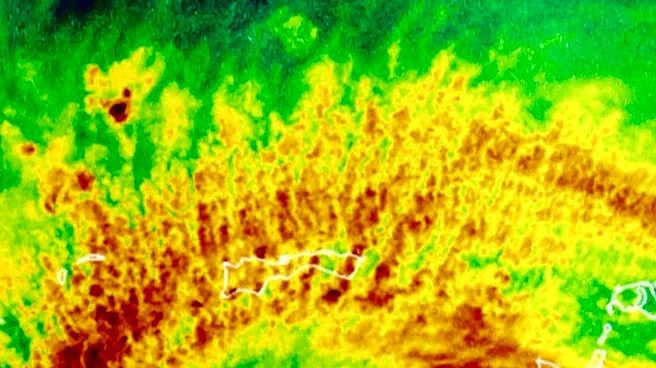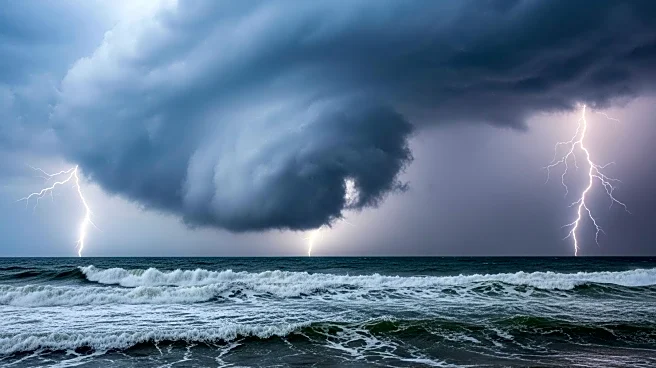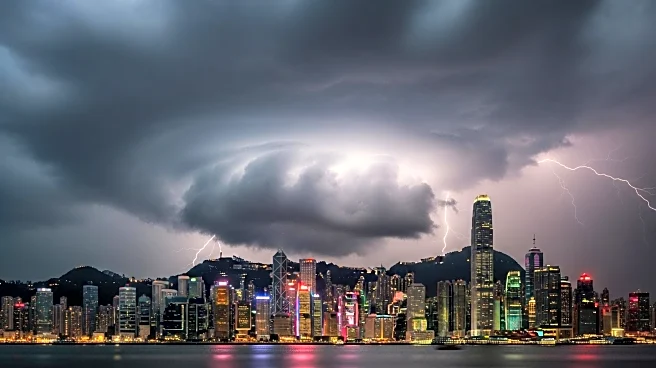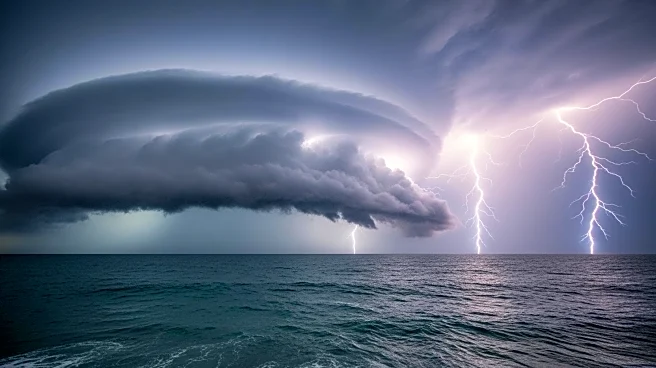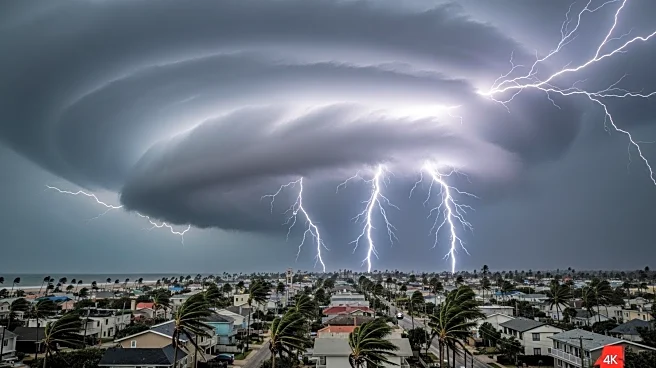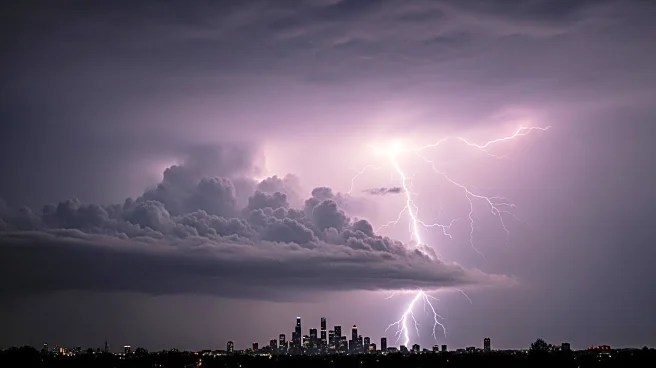What is the story about?
What's Happening?
Super Typhoon Ragasa, the most powerful storm of the year, has hit the northern Philippines with devastating winds and heavy rain, leading to the evacuation of thousands. The storm, known locally as Nando, made landfall in the Cagayan province, bringing sustained winds equivalent to a Category 5 hurricane. As Ragasa moves westward, Hong Kong, Taiwan, and southern China are preparing for its impact, with authorities issuing warnings and taking precautionary measures.
Why It's Important?
The arrival of Super Typhoon Ragasa poses significant risks to millions of people across the affected regions. The storm's intensity highlights the increasing frequency and severity of weather events due to climate change. The potential for widespread damage, flooding, and landslides underscores the need for effective disaster preparedness and response strategies. The economic impact could be substantial, affecting infrastructure, agriculture, and local economies in the storm's path.
What's Next?
As Ragasa continues its trajectory, Hong Kong and southern China are bracing for its arrival, with expected landfall in Guangdong province. Authorities are implementing evacuation plans, suspending schools, and preparing emergency services to mitigate the storm's impact. The typhoon is also expected to affect Vietnam later in the week, prompting further alerts and preparations. The ongoing response efforts will be crucial in minimizing casualties and damage.
Beyond the Headlines
The super typhoon's impact is a stark reminder of the challenges posed by climate change, particularly in vulnerable regions. The increasing intensity of storms necessitates advancements in meteorological forecasting and disaster management. Long-term strategies to address climate resilience and adaptation are essential to protect communities and reduce the economic burden of such natural disasters.
AI Generated Content
Do you find this article useful?


